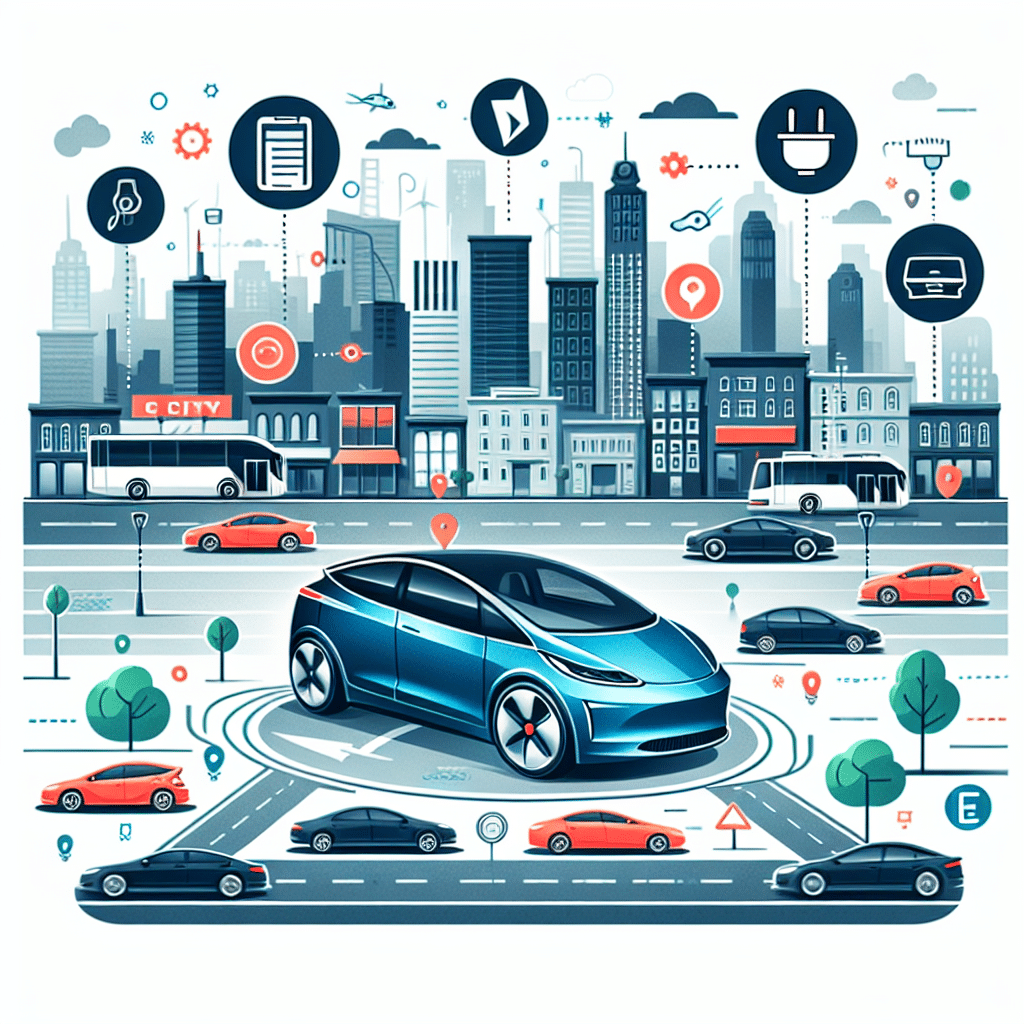Understanding Your Commute
Assess Your Daily Driving Distance
Before choosing an electric vehicle (EV) for city driving, start by evaluating your daily commute. Determine the total distance you travel each day. The majority of city drivers cover less than 40 miles per day, making most modern EVs suitable. For an efficient selection, look for an EV with a range that exceeds your daily needs to accommodate unplanned trips.
Consider Range Anxiety
While daily distances may be short, consider range anxiety—the fear that your vehicle will run out of charge before reaching your destination. To mitigate this, focus on EV models that offer a range of at least 150-200 miles on a single charge. This will provide peace of mind for longer trips and reduce the frequency of charging.
Evaluating Charging Infrastructure
Home Charging Setup
Assess whether you have the capability to install a Level 2 home charger, which can recharge most EVs in about 4-8 hours. This convenience significantly eases the burden of charging as you can plug in overnight. If you live in a multifamily dwelling, verify if there are charging stations available. A lack of home charging can steer you towards models with extensive public charging options.
Public Charging Availability
Familiarize yourself with local charging infrastructure. Utilize apps like PlugShare or ChargePoint to locate nearby charging stations, ensuring that they’re well-distributed throughout your city. Look for locations that offer fast-charging capabilities, allowing you to charge quickly during city errands or at work.
Selecting the Right Vehicle Size and Style
Compact vs. Midsize
City driving often entails navigating narrow streets and tight parking spots. A compact EV, such as the Mini Electric or Honda e, may offer enhanced maneuverability and ease of parking. However, if you frequently transport passengers or carry cargo, consider a midsize or crossover model, ensuring that it doesn’t compromise range or efficiency.
Cargo Space and Versatility
Assess the storage capacity of the EV. City dwellers may need space for groceries, equipment, or recreational gear. Consider hatchbacks or models with foldable seats, which can offer flexible cargo options. Evaluate the practicality of the trunk space, especially if your lifestyle necessitates carrying gear regularly.
Performance Attributes
Acceleration and Handling
EVs often provide instant torque, which offers confident acceleration in urban settings. Models like the Tesla Model 3 or Ford Mustang Mach-E can deliver thrilling performance, making them not only functional but also enjoyable to drive. Additionally, investigate the handling capabilities, as vehicles with tight turning radiuses excel in city environments.
Weather Performance
Depending on your location, you may need to consider an EV’s performance in various weather conditions. For instance, cold weather can reduce battery efficiency. Check for models with features such as heated batteries or excellent traction control to improve stability during adverse conditions.
Researching Ownership Costs
Incentives and Rebates
Investigate local, state, and federal incentives for EV purchases. Many regions offer tax credits that can significantly reduce the upfront cost of an EV. Additionally, look for rebates related to charging setups or incentives for using public charging stations. Understanding these financial advantages can impact your decision-making process.
Maintenance and Warranty
Being aware of the maintenance costs associated with an EV is crucial. Electric motors typically require less maintenance than traditional combustion engines, but researching specific models’ warranties can provide further insight. Models like the Hyundai Kona Electric come with extensive warranties and service packages, adding another layer of value.
Technology and Features
Infotainment and Connectivity
Modern EVs come equipped with advanced technology, enhancing the driving experience and connectivity. Features such as smartphone integration, navigation systems with charging point locators, and high-quality audio systems may affect your decision. Prioritize a user-friendly interface, as seamless connectivity can enhance daily usability.
Driver Assistance Systems
Consider the range of driver assistance technologies each model offers. Features like adaptive cruise control, automatic braking, and lane-keeping assist improve safety, especially in urban settings with heavy traffic. Opting for an EV with advanced safety technologies can provide reassurance when navigating busy city streets.
Environmental Impact
Sustainability Choices
Understand your prospective EV’s environmental impact. Research how manufacturers source their materials and the recyclability of batteries. Brands prioritizing sustainability tend to have a smaller carbon footprint overall. As an eco-conscious driver, selecting a vehicle that aligns with your values can be fulfilling.
Battery Production and Recycling
Battery production has environmental implications, so inquire about the company’s stance on battery recycling and sustainable materials. Some manufacturers have programs to recycle old batteries, which can help alleviate concerns for environmentally-conscious consumers.
Final Considerations
Test Drive Experience
Always test drive potential models to assess comfort, visibility, and driving dynamics. Pay attention to how the vehicle responds in city driving conditions, including stop-and-go traffic. Get a feel for the interior layout, the driver-assist functions, and the overall cabin space.
Future-Proofing Your Choice
Evaluate the EV’s longevity and technology as vehicles evolve quickly. Ensure the model you select has potential software updates and future adaptability. Research if the manufacturer frequently updates their infotainment systems or if they plan to add new features over time.
By following these detailed guidelines, you can select the right electric vehicle for your city driving needs, balancing practicality, performance, and sustainability.
